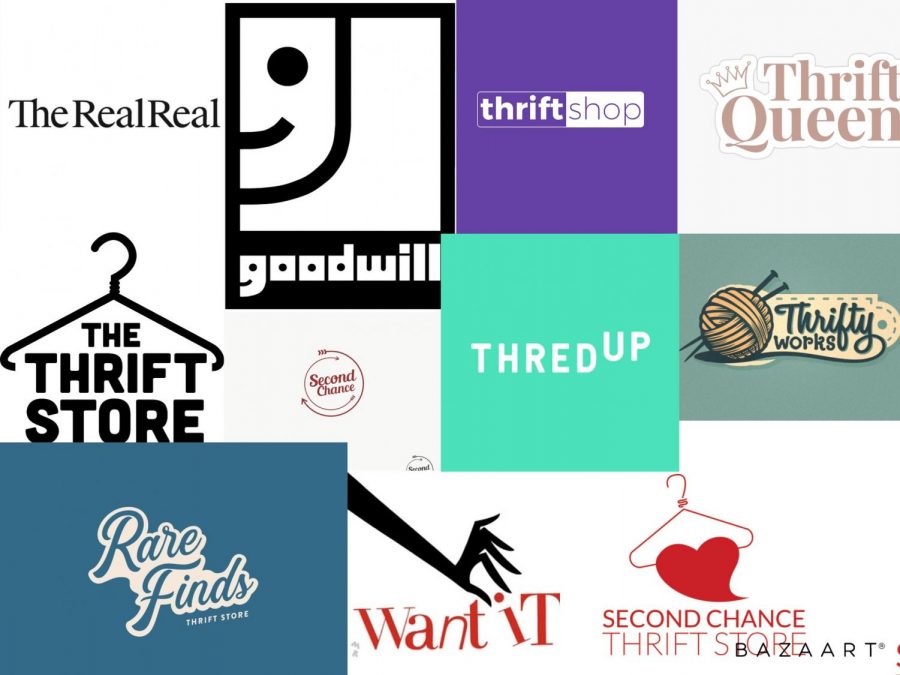$59.28.
I refreshed my phone. The bolded number remained in its spot.
Isn’t this supposed to be an online thrift store? I thought to myself. The price of one jacket was almost $60. My perplexity grew as I remembered that I had the very same jacket in my closet. I searched for a price, but there was no such luck. I continued my search by scrolling through my bank account until I found the amount I had paid. $13.18 for the same periwinkle jacket.
Astonished, I scrolled through more of the online store and saw that the prices were consistently higher than what someone would typically pay for the same item.
Sunglasses I had as a six-year-old were suddenly being labeled as “y2k” and “vintage,” so companies can accumulate higher prices by marketing these items as valuable or trendy. Because of inflation – the purchasing power of a given currency over time – and fluctuating prices due to changes in supply and demand, prices of apparel are at an all-time high.
Even as people are becoming more sustainable, the average American still generates 82 pounds of textile waste each year. That adds up to more than 11 million tons of textile waste from the U.S. alone. Not only does the amount of waste a company produces affect where we choose to shop, but so does whether the company uses fast fashion, sustainable packaging, animal testing, etc., also plays a huge role. All these factors together eliminate the number of truly eco-friendly stores.
Then there is what seems like the golden option, thrift shopping.
There is no packaging, it is secondhand, reduces the chemical pollution induced by creating and buying new clothes, and less cotton production. Perfect, right?
Leila Farhi, a junior, calls attention to the very reasons why this is flawed. While it is important to be conscious of where you shop, thrift shopping isn’t always the best choice for everyone.
“For years, I’d shopped at thrift stores because they were accessible and cheap enough for me. Every year I would buy virtually all my clothes from thrift stores. Now you walk in, and they’ve bumped up the prices. Essentials and cute statement pieces are gone, or insufficient stock, and then you see rich people buying these essentials,” Farhi said.
While secondhand shopping is a preferred eco-friendly way to shop, Farhi offers another way to keep the environmental benefits of thrifting without the negative connotations, upcycling.
Upcycling is the reuse of materials to create new clothing items for yourself. When one of your old shirts is no longer in style, you can sew it into a bag or a new trendier top. Learning to sew may be difficult for many, so hand-me-downs are also a great option.
“I just want to reiterate that thrifting should be for everyone, but if that someone who isn’t lower-income or a Black/Brown POC, they should be mindful of how what they are thrifting affects those around them,” Farhi said.
Thrifting may be accessible and cheap for you, but for low-income families, it is the only way they can obtain essential items.
To find a full list of brands to avoid and why, click here.













Isabel Wright • May 31, 2021 at 5:53 pm
I have a couple of thoughts. First, I hope you can differentiate between a ‘thrift shop’ and a ‘consignment store’ because they are two very different things. In the collage of pictures that you have shown above, some of those are consignment stores, NOT thrift stores, like ThredUp, depicted, and Plato’s Closet. Consignment stores are typically more knowledgeable of their inventory because their clothing is ‘nicer’ and more organized than your typical thrift stores, so the prices in consignment stores 90% of the time are more expensive than thrift stores. For example, if you walk into Goodwill, the signing and organization of the clothes are very straightforward; pants, sleepwear, men’s pants, etc. meanwhile, Plato’s has different racks of different brands and is more expensive than Goodwill most thrift stores. Also, due to the influx of hundreds and thousands of pounds of clothes that are donated to Goodwill daily, it is simply not possible to assert every Goodwill branch to research, markup, and separately price every item that could be labeled ‘y2k’, meaning that it is not possible for Goodwill to up their prices due to different current trends like you have stated in your argument. Like the man above me has stated, yes, inflation exists but in terms of marking up clothing, not the way you stated.
In terms of sustainability, shopping thrift stores and consignment stores are BOTH ETHICAL. You have proved in your writing that they both are sustainable, meaning the clothes don’t come from big corporations that contribute to mass production, mass carbon emissions, and the use of child laborers, the sole meaning of ethicality. But what I don’t understand is that your title contradicts your writing. You explain how thrifting used clothes from thrift stores doesn’t contribute to any factors of unsustainability, yet your counterargument has nothing to do with the sustainability of a company? Pricing of consignment stores and the shakey, controversial argument that thrifting doesn’t allow lower-income families to obtain the clothing they need both have nothing to do with the ethicality and sustainability of a company. Those are two separate issues. Ethicality refers to environmental and child labor problems, how the clothes are PRODUCED, how the clothing is made. The problems consumers project about the products and the prices of a company, like how lower-income families ‘can’t obtain what they need’, have nothing to do with the sustainability of thrift stores.
A little side piece with the statement that thrifting doesn’t allow lower incomes to obtain the clothing, I have heard this argument before, and I disagree with it mainly because of the statistics of how much clothes is dumped to Goodwill. I don’t understand people who praise ethicality, then gatekeep thrift stores saying there isn’t enough clothing for a certain demographic of lower-income families, which makes zero sense compared to the factual and apparent evidence of the hundreds of thousands of clothes in thrift warehouses and stores. There is more than enough for everyone. Also, many thrift stores circulate a portion of their income back into the community, helping lower-income families like Goodwill itself. Thrift stores are not only specified for a certain type of people; thrift stores are intended for people that seek cheaper clothing and don’t mind that it has been pre-used.
Personally, I think your article could be improved by researching the true meaning of ethicality and maybe actually interviewing someone from a lower-income household to testify that other non-lower income families are taking away their essential thrift stores needs because, from all I’ve seen, the only people making that claim are people that have no experience with that issue. So far, it seems that that argument was made as a ‘what if’ statement.
William • Apr 22, 2021 at 9:41 am
I see all these articles criticizing thrift store pricing, attempting to define what types of people “should” shop in thrift stores, the gentrification of thrift stores, etc., but you and other writers never mention a couple of important points. First, some thrift stores, like Goodwill, exist to create jobs in the community and to financially support their mission programs. Goodwill’s programs provide job skills training, soft skills coaching, education opportunities, government-contracted jobs for people with disabilities, education and pre-apprenticeship training for at-risk youth, and job training for people with disabilities so they can become more independent. The Salvation Army also uses proceeds from its stores to support mission programs.
Nonprofit thrift stores still have to employ people to operate the stores, as well as pay rent, utilities, and other expenses. Any additional money the stores make from selling donated items funds the programs these organizations offer to their communities at no cost. Inflation is real, and these organizations feel its impact just like any other. Although price-gouging should never be a thrift store tactic, the practice of slightly increasing prices to account for increases in costs shoudn’t be criticized. These stores have to keep the lights on, and they have to pay their employees fairly, otherwise, they’re bashed for NOT paying them fairly.
In addition, many articles, like yours, attempt to define the groups of people thrift stores are “intended” for. (It’s interesting that, the way you worded the sentence, you believe white people should be low-income to shop in thrift stores, but Black and brown POC can thrift regardless of their income bracket.) But how do you propose thrift stores ensure that only those in need shop there? And, if the reason nonprofit thrift stores exist is to fund programs that benefit their communities, then ANYONE who shops in those thrift stores is financially supporting those programs.
I’d just like to see more mention of the programs nonprofit thrift stores support, and maybe consider that anyone donating to or shopping in those stores is supporting programs to improve life for our communities and the people in them.